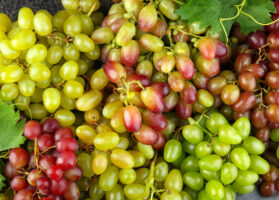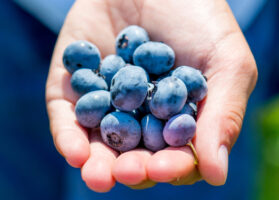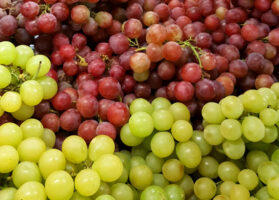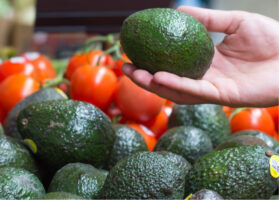Agronometrics in Charts: Latest forecast for US Orange production Down 8% from last season
In this installment of the ‘Agronometrics In Charts’ series, Valeria Concha studies the latest forecast for US Orange production. Each week the series looks at a different horticultural commodity, focusing on a specific origin or topic visualizing the market factors that are driving change.
The United States all orange forecast for the 2022-2023 season is 3.19 million tons, down 8% from the 2021- 2022 season, according to the latest Crop Production report released October 12 by the National Agricultural Statistics Service of the USDA.
Florida was struck by Hurricane Ian on Sept. 27; the all orange forecast is at 1.26 million tons, 32% lower from last season. In Florida, early, midseason, and Navel varieties are forecast at 495,000 tons, down 40% from last season. The Florida Valencia orange forecast, at 765,000 tons, is down 25% from last season’s. On Oct. 4, Christa Court, economist and director of the Economic Impact Analysis Program for the University of Florida Institute of Food and Agricultural Sciences (UF/IFAS) said that Hurricane Ian’s arrival coincides with the usual timeframe for plantings of most crops in the region. The crops in harvest now include avocado, oranges, grapefruit, carambola, corn, peanuts, and sweet potatoes.” Mark Hudson, with the USDA’s National Agricultural Statistics Service, said the impact of Ian on Florida’s citrus crops is currently unknown as their survey measurements were performed and completed prior to the arrival of the hurricane and no consideration was given to the storm’s impact. The next citrus forecast will be in December when the full impact of the storm may be reflected.
The California all orange forecast is 1.88 million tons, 17% higher from the last season, while the Navel orange forecast is 1.52 million tons, up 19% from the last season, maintaining the increase published on September 23 in Agronometrics. The California Valencia orange forecast is 364,000 tons, 6% higher from last season. The Texas all orange forecast, at 49,000 tons, is up significantly from last season’s final utilization.
During 2021-2022, Florida accounted for 50% of total United States oranges production and California 49.4%. However, 93.6% of Florida production was for processing and 6.4% for fresh, while 81.4% of California production was fresh.

Source: USDA Market News via Agronometrics.
(Agronometrics users can view this chart with live updates here)
Orange production in the US has been on a downward trend since 25 Years due to poor fruit set in California to unfavorably dry weather and the continued decline in area and yields in Florida as a result of citrus greening. Consumption is up with less fruit going to processing and higher imports to meet consumer demand. Currently, imports of oranges into the US market mostly come from Chile and South Africa,which are both in the final part of their season.

Source: USDA Market News via Agronometrics.
(Agronometrics users can view this chart with live updates here)
This season, orange prices on average have been between 9% (week 2) and 37% (week 14) higher from the previous season. During week 40, the average price per kg was $1.73, presenting variations from $2.07 (Size 138s) and $1.57 (Size 105s).

Source: USDA Market News via Agronometrics.
(Agronometrics users can view this chart with live updates here)
Written by: Valeria Concha






